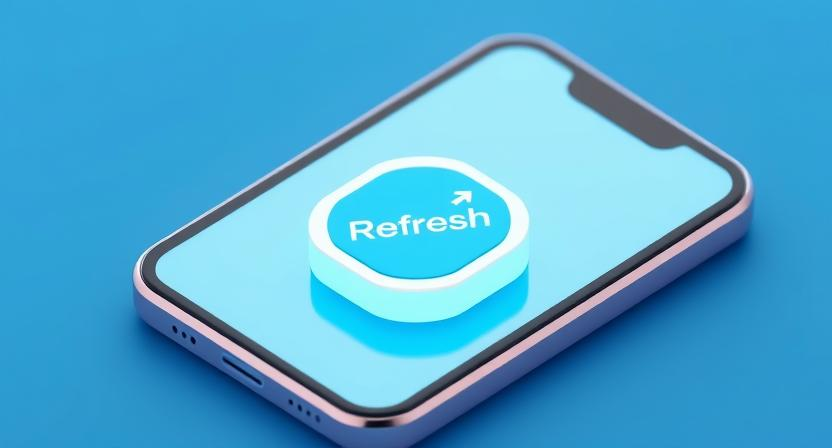Pull-to-Refresh
"Pull-to-Refresh," revolutionized mobile UX with a simple swipe-down gesture to update content. Adopted by Twitter and beyond, it became a universal, intuitive standard, enhancing real-time interaction and setting a lasting benchmark for design simplicity.

Pull-to-Refresh: The Swipe That Redefined Mobile Interaction
In the fast-paced world of mobile technology, few UI/UX innovations have proven as enduring—or as instinctive—as the "Pull-to-Refresh" feature. What started as a clever solution in a single app has become a universal gesture, seamlessly woven into the fabric of our daily digital lives. This simple swipe down to update content has not only streamlined mobile experiences but also set a new standard for intuitive design, influencing how we interact with apps worldwide.
The Impact: A Natural Motion with Big Results
Before "Pull-to-Refresh," updating content on mobile devices often meant tapping a button or navigating menus—a clunky process that disrupted the flow of browsing. Enter "Pull-to-Refresh," a gesture that feels as natural as flipping a page. By pulling down on a screen, users can instantly refresh feeds, emails, or news, all without leaving the interface. It’s a small action with a big payoff: real-time updates became effortless, and mobile UX shed unnecessary clutter.
The feature’s impact was seismic, particularly for social media and news apps where freshness is king. It turned passive scrolling into an active ritual, empowering users to control their content flow with a flick of the finger. Today, it’s a hallmark of polished mobile design—proof that the best innovations often mimic human intuition.
The Origins: From Tweetie to Twitter and Beyond
The mastermind behind "Pull-to-Refresh" is Loren Brichter, a developer who introduced the feature in 2008 while working on Tweetie, a popular Twitter client app. Brichter’s goal was simple: make refreshing tweets as smooth and instinctive as possible. His solution—a downward swipe that triggered an elegant animation and updated the feed—was a stroke of genius. It didn’t just solve a problem; it redefined how we think about mobile interaction.
Tweetie’s innovation caught Twitter’s eye, and in 2010, the company acquired the app and its creator. Soon after, "Pull-to-Refresh" rolled out across Twitter’s official platform, exposing millions of users to its charm. The feature’s appeal was irresistible, and it didn’t take long for tech giants like Instagram and Facebook to adopt it, adapting the gesture to their own ecosystems. What began as a niche experiment in a third-party app became a cornerstone of mobile design, embraced by developers and users alike.
The Legacy: A Swipe Heard ‘Round the World
"Pull-to-Refresh" is more than a feature—it’s a milestone in UI/UX history. Its success lies in its elegance: a single gesture that feels effortless yet delivers instant results. For designers, it’s a lesson in the power of simplicity and the value of aligning digital tools with human instincts. From social media to productivity apps, its influence is everywhere, a quiet reminder of how one developer’s vision can reshape the way we navigate the digital world.
As mobile interfaces continue to evolve, "Pull-to-Refresh" stands as a timeless benchmark. It’s a swipe that changed everything—proof that the smallest ideas, when executed brilliantly, can leave the biggest mark.
About the Author
Hina Firdause is a seasoned professional with nearly 10 years of experience. Currently based in Bengaluru, she works with Niti AI, where she leverages her expertise to drive innovative solutions. Passionate about technology and business, she actively engages in discussions on emerging trends, including no-code platforms and fintech disruptors, offering insightful perspectives drawn from her extensive industry experience.
